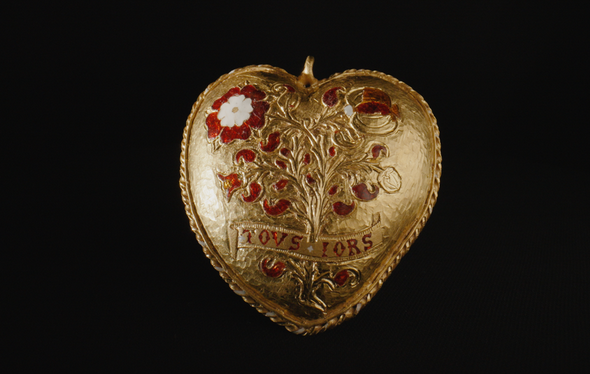The British Museum launched a Campaign to save the 'Tudor Heart', a Gold Pendant linked to Henry VIII

Discovered in 2019 by a metal detectorist, the Museum has the opportunity to purchase the Heart to stop it entering a private collection.
It hopes to raise £3.5m by April 2026 and calls for public support to achieve this goal and help ensure it remains on view for generations to come.
The dazzling heart-shaped 24-carat-gold pendant offers a rare glimpse into Henry VIII's marriage to Katherine of Aragon, uniting the Tudor rose with Katherine's pomegranate symbol. Beneath, a banner reads tousiors, the old French for 'always', a poignant declaration of an eternal connection. Their marriage, lasting 24 years, was the longest of Henry's life and shaped the early Tudor court with Katherine as a trusted partner of Henry, sometimes acting as Regent in his times of absence.
Almost no other objects survive that celebrate Henry and Katherine's relationship, most having been lost over time. The Tudor Heart therefore acts as an important historical witness, showing both the luxury of Henry VIII's earlier reign and the strength of their union before it was ultimately annulled in 1533.
Research by the British Museum suggests the pendant may have been created for a tournament held in October 1518 to mark the betrothal of their daughter, Princess Mary, to the French heir apparent. Henry frequently commissioned London goldsmiths to create 'costume' jewellery for major celebrations and state occasions which were worn briefly by members of the court to create the impression of great splendour.
The campaign has been kick-started by a donation of £500,000 from The Julia Rausing Trust, bringing the goal of acquiring the pendant closer.
Unearthed in a field in Warwickshire, the Heart was discovered and subsequently reported under the Treasure Act 1996. Under the act, finders are obligated to report all finds of potential treasure and are rewarded for their contributions to the telling of history. The vital scheme, run by the Portable Antiquities Scheme (PAS), gives museums and galleries in England an avenue to protect history and ensure museums have the opportunity to acquire unique and significant objects to put on public display.
Main Image: Tudor Heart - The Trustees of the British Museum
